Gigi and The Cat, by Colette, translated by Roger Senhouse and Antonia White respectively
I grew up with musicals. As a child, staying with my maternal grandmother, I used to love watching them with her. Dazzling choreography, great songs, and all in glorious Technicolor. Singin’ in the Rain remains my favourite film.
I saw Gigi back then, the 1958 musical with Leslie Caron in the lead role, but I don’t think I understood much of what was going on. Quite recently I saw it again, and absolutely loved it. It’s a joy of a film, with some great songs (I Remember It Well being a particular standout) and set pieces. It also has a tremendous cast, including of course Maurice Chevalier (whose Thank Heaven for Little Girls remains the dodgiest song I’ve ever heard in a musical, even as a child it seemed a bit questionable to me, though at least the singer does wait for them to grow up).
Colette’s original novella, here translated by Roger Senhouse, is just as much a joy as the film was. Perhaps more so, because it can afford a cynicism that Hollywood largely had to expunge and because Colette’s observations are so utterly delicious.
Gigi is a pretty young Parisienne, still in essence a child. Her mother is a moderately unsuccessful actress who has passed responsibility for Gigi’s upbringing largely to her own mother, with whom they both live. Gigi’s grandmother has plans for the girl, and to that end is having her trained by her own sister, Aunt Alicia.
What is Gigi being trained in? Well, that’s what I missed as a child watching the film. Gigi’s aunt is a grand courtesan, her grandmother was a courtesan too, though not so grand. Gigi, the illegitimate daughter of an actress, has very few career paths open to her and the one she’s being prepared for whether she knows it or not is the life of a serial mistress.
What follows is a wonderful clash of youth and idealism on the one hand, and age and guile on the other. Gigi’s innocence and sheer spirit has captured the friendship of the most eligible young man in Paris, Gaston Lachaille, but now she’s starting to leave childhood the possibility arises that she could be something more to him than just a friend. Gigi doesn’t understand that yet, but her grandmother and great-aunt most certainly do. If only Gigi showed the slightest aptitude for their training…
Don’t ever wear artistic jewellery; it wrecks a woman’s reputation.” ‘What is an artistic jewel?’ ‘It all depends. A mermaid in gold, with eyes of chrysoprase. An Egyptian scarab. A large engraved amethyst. A not very heavy bracelet said to have been chased by a master-hand. A lyre or star, mounted as a brooch. A studded tortoise. In a word, all of them frightful. Never wear baroque pearls, not even as hat-pins. Beware above all things, of family jewels!’ ‘But Grandmamma has a beautiful cameo, set as a medallion.’ ‘There are no beautiful cameos,’ said Aunt Alicia with a toss of the head.
This is novella as macaroon, a perfectly crafted little delicacy, beautiful to look at and delightful to bite into (why yes, I do love macaroons, why do you ask?). Gigi’s lessons are full of acerbic little asides (“The telephone is of real use only to important businessmen, or to women who have something to hide.”) and pretty much every page had me laughing.
The three great stumbling-blocks in a girl’s education, she says, are homard à l’Américaine, a boiled egg, and asparagus. Shoddy table manners, she says, have broken up many a happy home.
Colette here manages to be both cynical and romantic, to have her gateau and to eat it. I could quote it endlessly, and can easily imagine rereading it. It’s just huge fun.
All of which makes it a bit of a shame that I didn’t like the other novella in the Vintage Classics edition I read at all. The Cat is actually an earlier work by Colette (1933, whereas Gigi is 1945). It’s the story of a young man who has a frankly unhealthy relationship with his pet cat and the rivalry that develops between that cat and his new bride.
I grew up with cats, and have loved them all my life. This should then be the novella for me. Unfortunately though I’ve never met a cat that behaved remotely like the cat Saha does in this story – too human to ever be convincingly cat. Then again, I’ve never met humans who behaved much like the humans do in this story either.
Alain, Saha’s owner, is an unwordly sort who is marrying more from duty than love. Here he coldly considers his new bride:
Alain listened to her, not bored, but not indulgent either. He had known her for several years and classified her as a typical modern girl. He knew the way she drove a car, a little too fast and a little too well; her eye alert and her scarlet mouth always ready to swear violently at a taxi-driver. He knew that she lied unblushingly, as children and adolescents do; that she was capable of deceiving her parents so as to get out after dinner and meet him at a night-club. There they danced together, but they drank only orange-juice because Alain disliked alcohol. Before their official engagement, she had yielded her discreetly-wiped lips to him both by daylight and in the dark. She had also yielded her impersonal breasts, always imprisoned in a lace brassière, and her very lovely legs in the flawless stockings she bought in secret; stockings ‘like Mistinguett’s, you know. Mind my stockings, Alain!’ Her stockings and her legs were the best things about her. ‘She’s pretty,’ Alain thought dispassionately, ‘because not one of her features is ugly, because she’s an out-and-out brunette. Those lustrous eyes perfectly match that sleek, glossy, frequently-washed hair that’s the colour of a new piano.’ He was also perfectly aware that she could be as violent and capricious as a mountain stream.
It’s a long quote, but an interesting one. This is his bride to be, but note the complete lack of passion. Here, by contrast, Alain considers his cat:
As soon as he turned out the light, the cat began to trample delicately on her friend’s chest. Each time she pressed down her feet, one single claw pierced the silk of the pyjamas, catching the skin just enough for Alain to feel an uneasy pleasure. ‘Seven more days, Saha,’ he sighed. In seven days and seven nights he would begin a new life in new surroundings with an amorous and untamed young woman. He stroked the cat’s fur, warm and cool at the same time and smelling of clipped box, thuya and lush grass. She was purring full-throatedly and, in the darkness, she gave him a cat’s kiss, laying her damp nose for a second under Alain’s nose between his nostrils and his lip. A swift, immaterial kiss which she rarely accorded him. ‘Ah! Saha. Our nights . . .’
Leaving aside the anthropomorphising there, we’re in distinctly creepy territory. That’s not a problem per se, though it wasn’t clear to me whether I was supposed to find Alain quite as profoundly distasteful as I did, the issue is that this is a character driven tale without a single character one cares about.
It’s about the lowest form of book criticism to say a book is bad because it has no likeable or sympathetic characters, and that’s close to where I’m getting here so I need to be a little careful. I read noir though, and it never bothers me there that frequently everyone in the story is utterly repellent.
The issue here is that Alain is so fixated on his cat he moves beyond the credible. He becomes almost an image of mental illness, but that’s not what this story is. His bride, efficient, modern, is put in the incredible situation of competing for her husband’s affections with his cat but since I didn’t believe in the husband or the cat the whole setup just became rather artificial.
As I grew distant from the story it jarred more and more. At one point, Saha becomes concerned that she’s upset Alain and so scoops “up a rusk from the table and held it between her paws like a squirrel.” Cats lack both the empathy and the grip to do anything like that. If I’d been enjoying the story I’d have read that passage generously, but I wasn’t and instead it became just another unconvincing detail.
For me then The Cat became a hugely contrived tale featuring a conflict that I didn’t believe in between characters who didn’t persuade me. It’s neat, and I don’t say that remotely as a compliment. Gigi is a vastly more accomplished tale. I’ll return to Gigi, but I doubt very much I’ll ever return to The Cat.
I should add, by way of postscript, that as I write this I’m actually surprisingly tired, my own cat having shown a distinct lack of empathy last night and having woken me repeatedly as she wanted to curl in and was annoyed I wasn’t responding. I love cats, but putting the feelings of others ahead of their own isn’t one of their core strengths as a species.

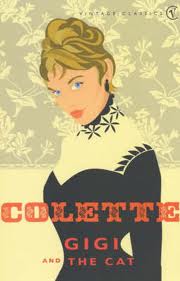
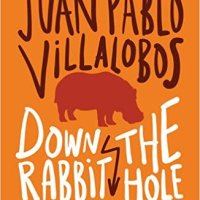
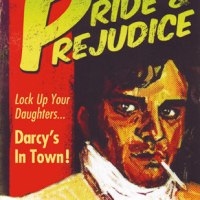
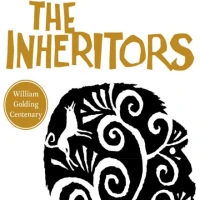

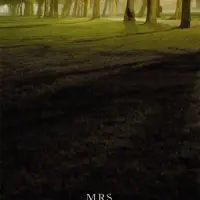


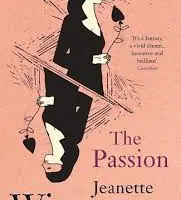





Hello,
I loved the tone of this review. Keep on like this and you’ll use more French words than me in your English. 🙂
There’s a review of The Cat on Caroline’s blog.
Gigi sounds like a great read, I wonder if this character is anything like Colette herself. I started reading Colette last year with Le Blé en herbe and it was marvellous (you’d like this one too)
In French, her language is very precise and there were many words I didn’t know. According to the quotes you included here, Gigi and The Cat sound simplier.
PS: sorry your cat kept you up at night.
Cats do that. One of the things I love about them is they introduce a little chaos into what could otherwise be a tediously ordered life. Others have I think children to fill that role.
It is a great read, adorable really. I wonder what Le Blé en herbe is titled in English. I’ll check.
I can imagine the French would be excellent.
Ah ha. I should have guessed. I would like to direct your attention to “A Passion in the Desert,” a Balzac story from 1832 about a love affair between a soldier and a panther. Colette is updating and domesticating Balzac.
“I love cats, but putting the feelings of others ahead of their own isn’t one of their core strengths as a species.” So true…
I too saw Gigi as a child (and I also like musicals but have to be in the right mood or perhaps more accurately I watch them when I need a boost of optimism). I think I would enjoy the story so I’ll have to see if it’s in a copy of her collected works.
Singin’ in the Rain is an-all time favourite. Have you seen Cover Girl by chance?
Amateur Reader’s suggestion is a good one–it’s a strange story (Passion in the Desert) and it’s been made into a strange film.
As much as I love cats, I’m not surprised that courtesans are more interesting.
Colette really has quite a range, doesn’t she? Gigi was one of the first books I read in French a gazillion years ago, but I loved it, and it spurred me onto some of her other works (for whatever it’s worth, the very short Mitsou is a favorite, but what I really loved was her autobiography, translated into English as Earthly Paradise).
I wonder whether Juliette Greco was aware of the Balzac and/or Colette stories when she decided to adopt a leopard and parade it around the streets of Paris on a leash? (There’s a wonderful painting of her and her leopard in Paris’ Carnavalet museum).
Le blé en herbe is The Ripenning Seed in English. There’s a billet about it. There are posts about Colette on Litlove’s blog, I think it’s one of her favorite writers.
I can’t say I loved Passion dans Le desert but I’d be curious to read your thoughts about it. (It’s a short story)
Pingback: GIGI | still stella
I’ve downloaded a free translation of that Balzac story, thanks Tom and Guy. Oddly I don’t think I have seen Cover Girl, but googling it clearly I should.
Kevin, put that way it is perhaps unsurprising which story was the more rewarding.
Scott, my impression is yes but this was my first Colette so I’m not much qualified to say yet. I do hope to read more though. I’ll look out for Mitsou. I can see she might write good autobiography too. Emma, I’ll check the billet and Litlove’s blog, thanks.
gigi sounds very interesting ,I haven’t watch many musicals and not seen the one for this book and didn’t know it was a book thanks for sharing max ,all the best stu
Gigi’s tremendous Stu. One to save for when you’re feeling a little jaded and could use a palate cleanser.
Ah, great stuff, Max. Love the sound of Gigi and that’s a fab quote on the artistic jewellery. I can just picture the aunt tossing her head as she delivers that final line. The Cat, on the other hand, sounds like a very different animal indeed. Does your edition include any explanation or reason for pairing these two stories together? They sound very different in tone and style. The library has a copy of this edition, so I think I’ll go down that route and stick to Gigi (despite my love of cats). In fact, Gigi sounds even better than Chéri, although I’d think you’d like that one, too.
It’s interesting to see Scott recommending Mitsou as one of my commenters (Fleur) has it on her to-read pile, and I think she might get to it soon.
Gigi’s great Jacqui. Chéri though on your review (http://jacquiwine.wordpress.com/2014/08/25/cheri-by-colette-tr-by-roger-senhouse/) does sound excellent and a good companion piece to Gigi (or vice versa).
The Cat fits well here in terms of two decent sized stories in one relatively slim volume, and it may well be that others love it more than me. I thought I was a natural for it given my fondness for cats, but it’s not a romantic fondness. I love them as they are, not as the little humans some seem to like to imagine them to be.
Pingback: Chéri by Colette (tr. by Roger Senhouse) | JacquiWine's Journal
I’m years late to the party so I don’t know if you’ll stumble across this, but I just finished “Gigi and The Cat” last night, and I agree entirely with your assessment. It was “The Cat” in the title that convinced me to buy the book a while back, but that story was stinko–and Saha is no cat. “Her friend”? Give me a break. But I loved “Gigi.” Amateur Reader may point you to Balzac for “The Cat,” but I say “Gigi” is an abridged version of Proust.
I just stumbled across it! Happy New Year!
Glad you agree. The Cat is pretty stinko and Saha is definitely no cat. Gigi though is brilliant, and your abridged version of Proust is a nice thought/comparison.